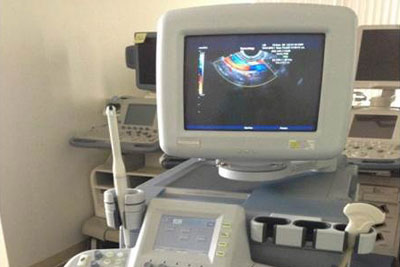
Abnormal Pap Smears
A pap smear is an important part of your overall healthcare. In detects changes in the cells of the cervix, and helps to find them early so they can be treated before they become serious. The cervix is covered with a thin layer of cells, which periodically shed and become abnormal. Abnormal cells go through several stages of change before cervical cancer appears, and usually happen over a number of years. There is a vaccine available to help protect against a virus that can lead to abnormal and pre-cancerous cervical, vaginal and vulvar lesions. However, the vaccination may not fully protect everyone who gets the vaccine, and should not substitute for routine cervical cancer screening. Read More…

Breast Changes
Occasionally, you may feel changes in your breasts, causing them to be lumpy or tender. These changes most often occur near the time of a woman’s period and are not a disease or increase your risk of cancer. However, monthly self breast exams are an important part of your healthcare. You should be aware of how your breasts feel on a regular basis. Knowing what is normal for you will help you detect any new changes that should be checked by your doctor. Read More…

Colposcopy
A colposcopy is a way of looking at the cervix through a special magnifying device called a colposcope. This device allows a doctor to see changes that suggest abnormal cells that cannot be seen by the eye alone. Sometimes, a colposcopy may need to be done more than once. It is best done when you are not having your period; and you will be instructed not to douche, use tampons, use vaginal medications or have sex 24 hours prior to the procedure for best visualization. Read More…

Endometrial Ablation
Endometrial ablation is a procedure to treat abnormal, heavy uterine bleeding, by allowing heated saline to circulate with the uterus, while destroying the lining (endometrium). This is only done in women with a form of permanent birth control in place. This can be done on an outpatient basis or as an in-office procedure, pending insurance authorization and/or patient preference. Read More…

Endometrial Biopsy
An endometrial biopsy is a procedure to remove a small sample of the lining of the uterus (endometrium). An endometrial biopsy helps your physician evaluate whether the endometrium is going through its normal changes during the menstrual cycle and to determine whether precancerous conditions are present. Read More…

Essure Sterilization
Additional information about the Essure procedure is available at :http://www.essure.com/PopUps/FlashDemo.aspx or by calling the Essure Information line at 1-877-ESSURE1. Read More…

Hormone Replacement Therapy (HRT)
Hormones are chemicals that control when and how certain organs work. They are made by glands in the body. In women, the hormone estrogen (made primarily by the ovaries), plays a key role in the reproductive system, menstrual periods, menopause, and the health of bones, heart, and blood vessels. Read More…

Human Papilloma Virus (HPV)
There are over 100 strains of HPV, most of which cause no symptoms. HPV is a very common infection that can be passed from person to person. Some types spread through vaginal, anal and oral sex. Certain types can be linked to pre-cancerous (changes in cells that may, but not always become cancer) and cancer cells in both men and women. Different strains may cause genital warts. Read More…

LEEP (Loop Electrosurgical Excision Procedure)
If a colposccopy biopsy detects that you have a certain degree of abnormal cells on your cervix, your doctor may suggest a LEEP, which is designed to remove the abnormal cells from your cervix, allowing new healthy cells to grow. (The cervix is covered by a thin layer of tissue like your skin, which periodically sheds cells. If these cells become abnormal, it may increase the risk of cancer of the cervix). Read More…

Osteoporosis
Osteoporosis is a progressive disease that causes bones to become thin and brittle, making them more likely to break. Osteoporosis may result in broken bones in the spine and hip. Hip fractures often require hospitalization, and fractures of the bones in the spine (vertebrae) can cause loss of height and severe back pain. Both may lead to permanent disability.
Read More…

Pelvic Ultrasound
A pelvic ultrasound uses sound waves to make a picture of the organs and structures in the lower abdomen. A pelvic ultrasound looks at the bladder, ovaries, uterus, cervix and fallopian tubes. This can be used to identify cysts, fibroids and other gynecological conditions, organs and structures that are solid and uniform, like the uterus and ovaries, or are fluid filled, like the bladder show up clearly on a pelvic ultrasound, sending sound waves to a computer. Read More…

Sexually Transmitted Diseases
Sexually transmitted diseases are infections that are transmitted by vaginal, anal or oral sex. Symptoms can range from mild irritation to severe pain. Some may have no symptoms at all. Some STDs can be treated and cured, others cannot. Tests can be done to diagnose infection. Read More…

Urinary Incontinence
Women need not be embarrassed by incontinence because much of the time it can be cured, or at least treated. Behavioral techniques, exercise, lifestyle changes and medical devices are often tried first. However, their success depends on your ability to stick with them and on the severity of your incontinence. Surgical techniques are minimally invasive and can have quick recovery times. Read More…
